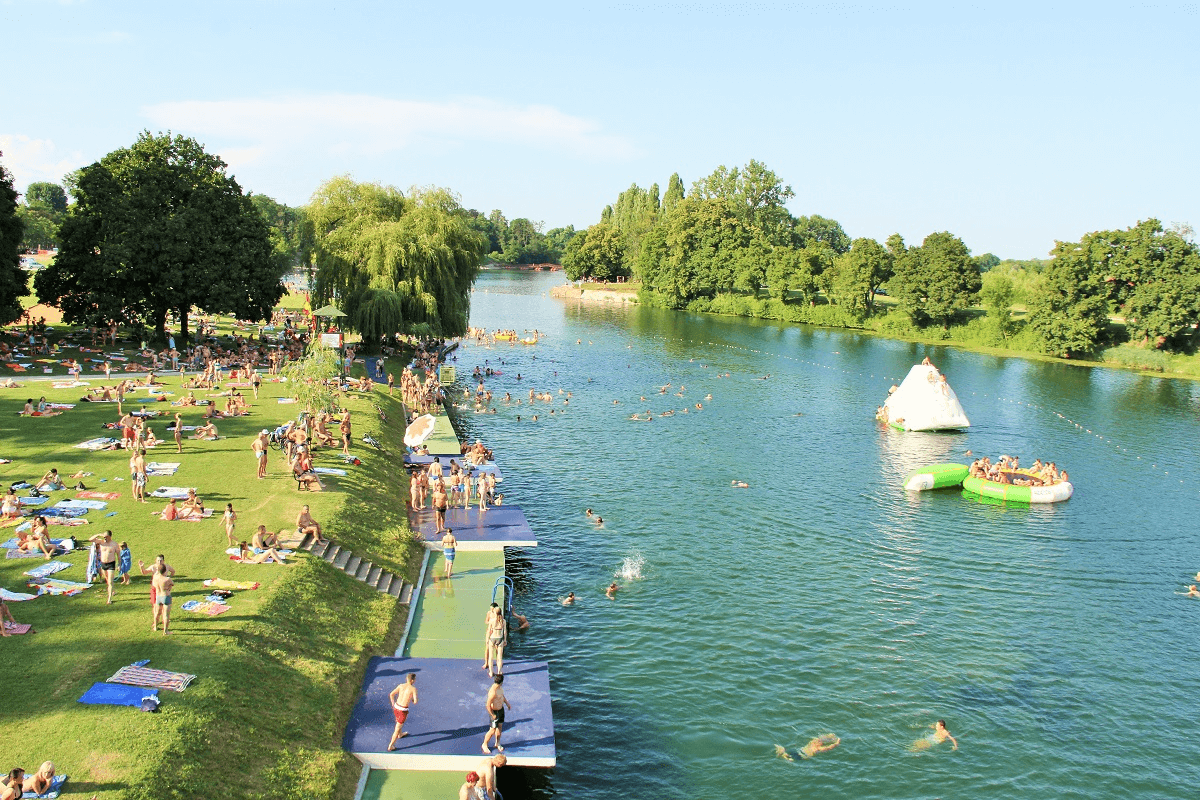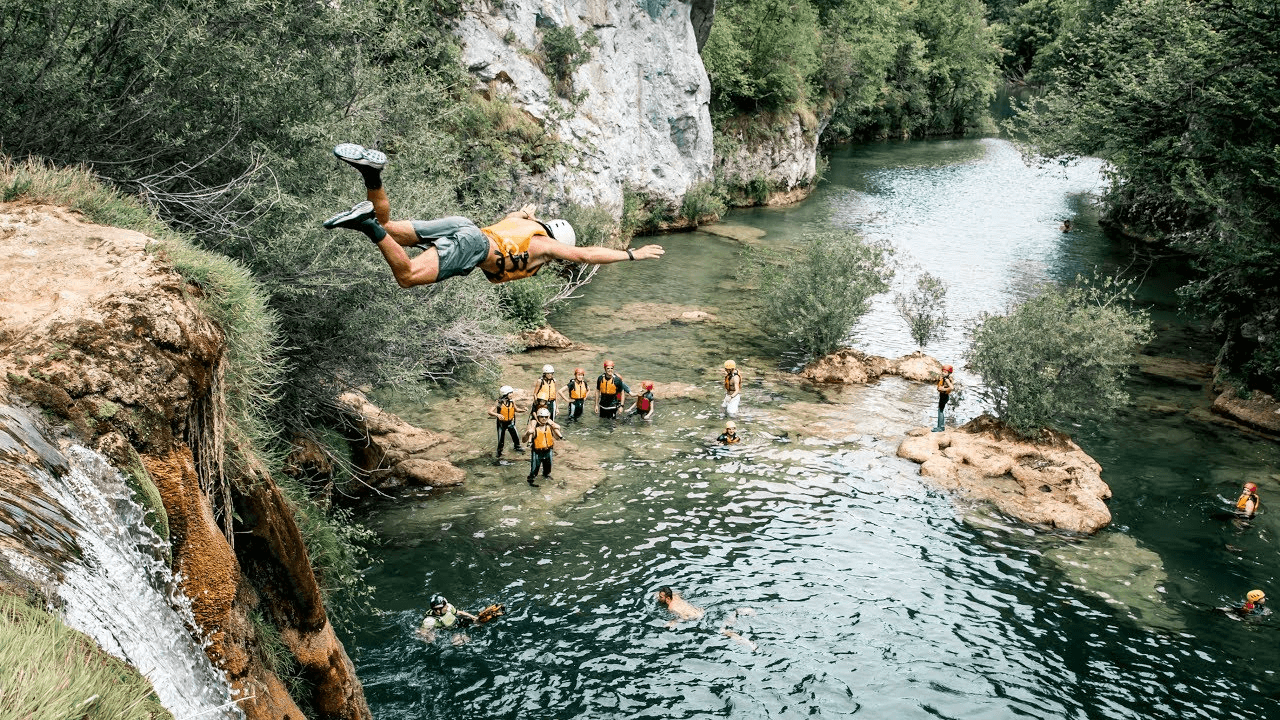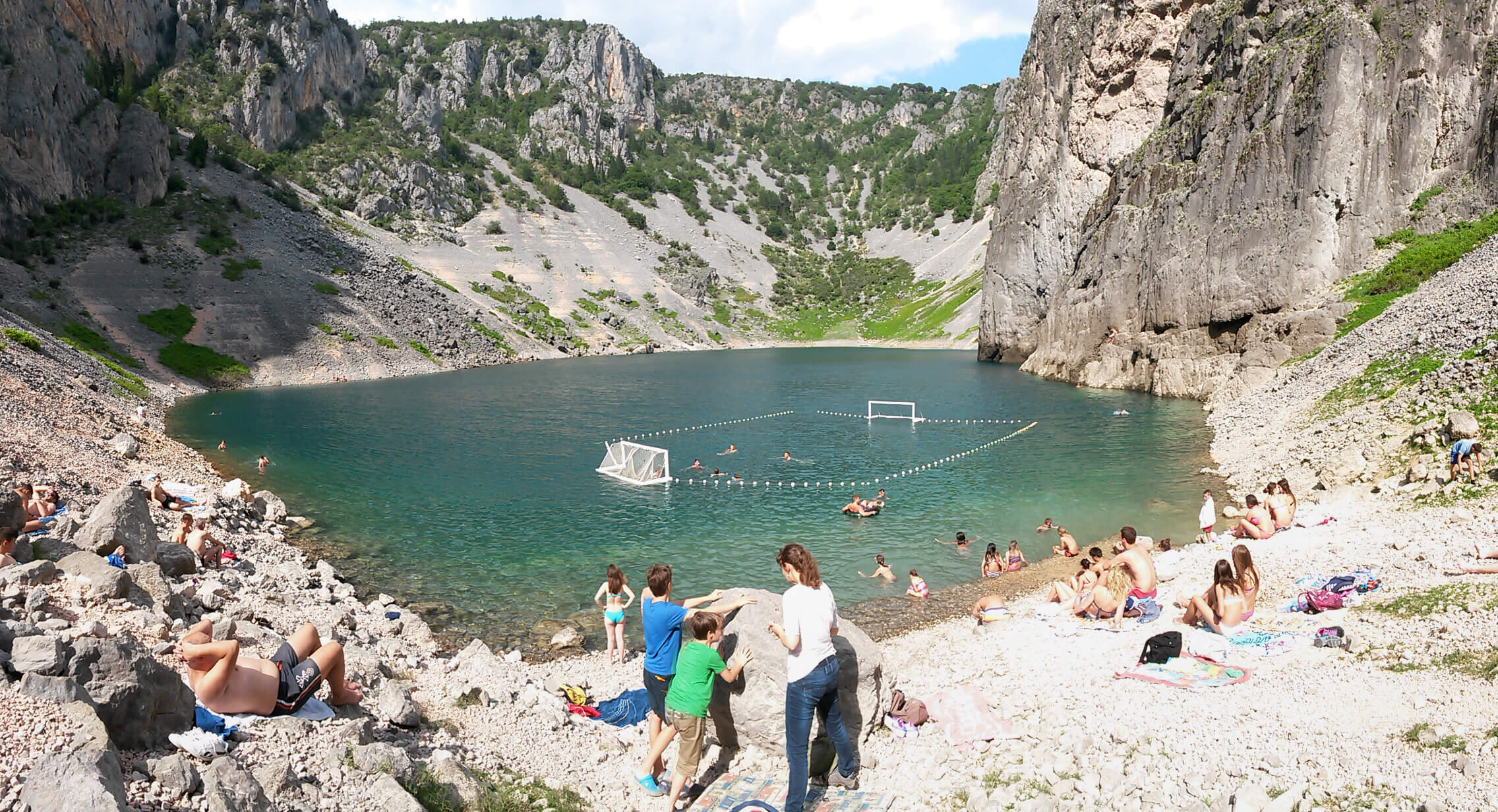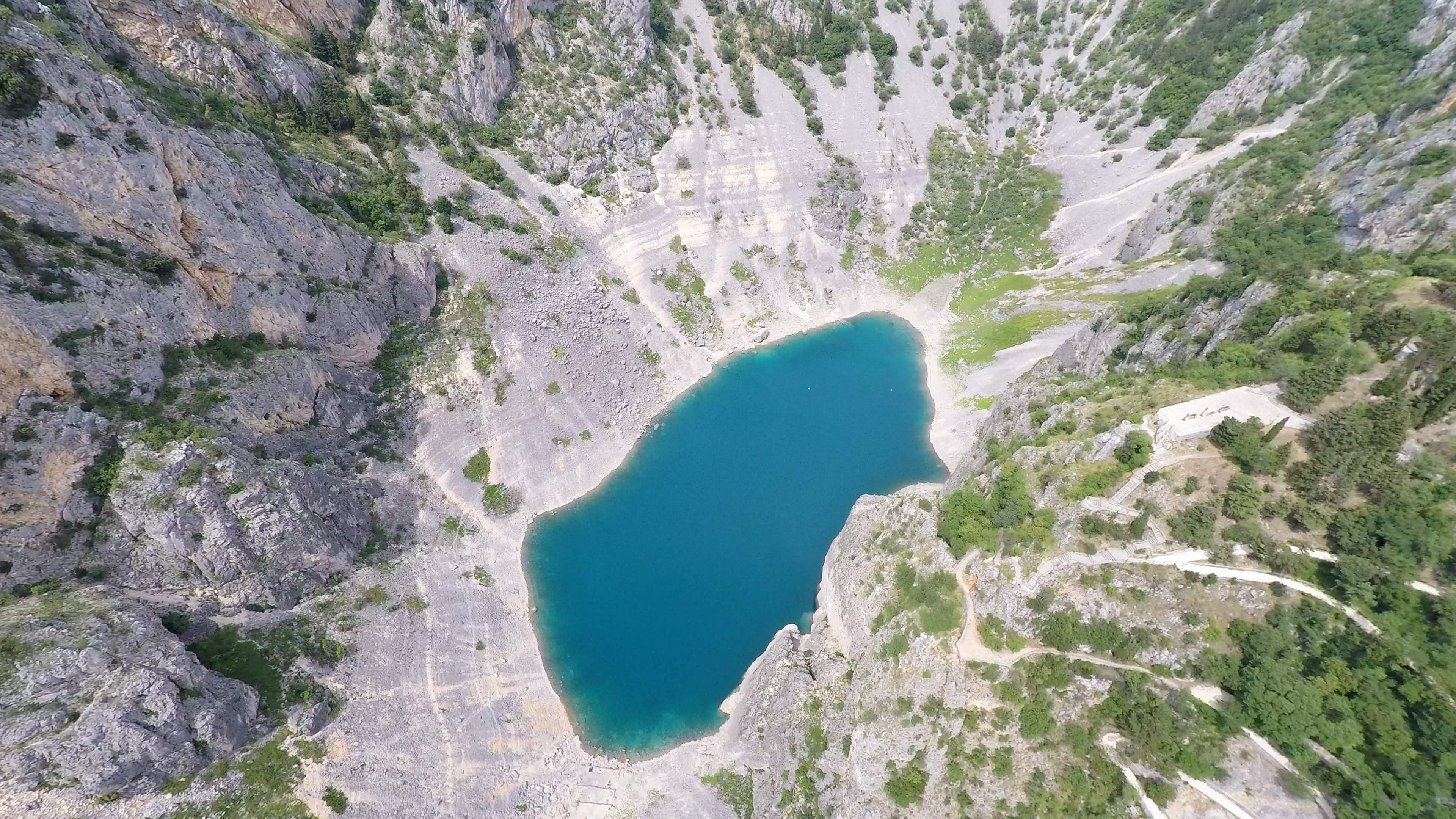Five Freshwater Destinations in Croatia for a Summer Dip
May 29, 2022 - While it may sound silly not to take advantage of the summer to enjoy the Adriatic Sea to the fullest, this time of year is ideal for visiting other destinations beyond the coast. In case you are far from the sea and need to take a dip, here are some freshwater destinations in Croatia to cool off!
Summer in Croatia is synonymous with turquoise waters, paradise islands, and sailboats. For many, if your vacation does not include any of these, then you are not enjoying the country as you should. I do not agree. Although visiting the Adriatic is essential, summer brings with it a wide variety of opportunities throughout the entire geography of Croatia. The parks and fields are filled with green and shade, perfect for hiding from the sun. Also, the number of events and festivities multiply considerably in central and eastern Croatia. Why would you miss any of this?
If you can, including central and eastern Croatia in your travel itinerary is a great idea. Zagreb and Osijek airports will also increase their routes and flights throughout, and after getting to know both cities and their surroundings, you can head to see what makes Croatia so famous: its coast and islands. But don't worry, we know that these regions of the country are no strangers to high temperatures, and you will surely want to take a dip before waiting to travel to the coast. If freshwater is also your thing, here are some non-beach destinations in Croatia where you can cool off.
Jarun lake, Zagreb
When temperatures rise to an unbearable point at this time of year, Lake Jarun becomes a haven of shade and fresh water for the inhabitants of the Croatian capital. Jarun Lake is a 2 km artificial body of water, surrounded by cycling paths, promenades, forests, and parks. It was built and opened in 1987 for the Universiade - World University Games. The lake is ideal not only for bathers, but for all those who practice activities such as rowing, kayaking, or paddling.

Jarun lake. (Image: Croatian National Tourist Board)
Drava river, Osijek
The Drava, the main river in Osijek, gives the city not only a beautiful appeal but also offers its inhabitants an ideal alternative when summer arrives and the Adriatic is so far away. One would think that it is the custom of only a few, but the banks of the Drava are filled with hundreds of people looking for a good dip even on weekdays. In addition to lying down to sunbathe, family and friends gather to play on the shores and have a picnic.

Drava river, Osijek. (Photo: Mario Romulić)
Foginovo kupalište, Karlovac
Foginovo kupalište is a river bathing area in the city of Karlovac, where its inhabitants cool off in the waters of the Korana river. From its source in Plitvice, the Korana river reaches Karlovac, offering for centuries an oasis of peace, nature, and freshwater to locals and visitors. Bathers enjoy not only fairly clean waters but can also do so in peace thanks to the lifeguards always nearby. It is definitely an ideal destination for everyone, as adults can sunbathe on the shores, while the younger ones enjoy the inflatables and the diving tower.

Foginovo kupalište, Karlovac. (Image: Zelenilo.hr)
Cetina river
The Cetina river is one of the largest and most important rivers in southern Croatia, rising from the Cetina spring to the east in Šibenik-Knin County, running through almost all of Dalmatia, and reaching the Adriatic Sea at Omiš. There are those who find the Cetina spring itself an ideal spot for a summer dip, but the entire river has numerous points to cool off. If you are in Omiš, encourage yourself to participate in activities such as kayaking, canoeing, or rafting, as many of the organizers include moments during the tours to take a good bath in freshwater after a good exercise.

Cetina river. (Image: Mish and Kirk/YouTube Screenshot)
Modro jezero, Imotski
In Imotski, just an hour from Split by car, you will find not only a historic and quite picturesque town but also a group of lakes that are well-known in the country. One, in particular, Modro jezero, is an ideal bathing spot where high temperatures can easily be reached in these months of the year. Of all the alternatives mentioned above, Modro Jezero must be one of the most spectacular in terms of its location and scenery.

Modro jezero, Imotski. (Photo: Peter Malovrh/Flickr)
For more on travel in Croatia, follow TCN's dedicated page.
No Seagulls Allowed: Two Hawks Employed to Guard Imotski Lake from Unwanted Guests
February 23rd, 2022 - Two hawks named Seka and Bea have been tasked with keeping the Blue Lake in Imotski safe from seagulls
Known to invade urban areas in search of food, seagulls are generally seen as a nuisance all over the Croatian coast. In Istria, the onslaught of gulls is being fought through measures such as nest monitoring and replacing seagull eggs with plastic fakes.
Further south, in the Dalmatian hinterland, things were taken up a notch with proper guards employed to fight the good fight against the annoying gulls.
For a while now, seagulls have been treating the stunning Blue Lake (Croatian: Modro jezero) in Imotski as their living room, and plastic eggs probably wouldn’t have been of much help here - the situation called for more extreme measures.
Enter the guards: Seka and Beatrice Bea, two female Harris’s hawks who’ve been tasked with keeping the Blue Lake safe from the gull invasion.
As reported by Slobodna Dalmacija, seagulls laid siege to the Blue Lake in Imotski about ten years ago and haven’t shown any intention to leave ever since.
Every year from the end of February to September, i.e. as long as there’s water in the lake, seagulls flock to the lake in large numbers, devastating the flora and fauna and inconveniencing the people of Imotski and their guests who often go swimming at the lake.
The gulls eradicated all the frogs, gone is the song of the blue rock thrush, and grass snakes have left the area too. Not to mention all the gull feathers and feces covering the rocks and cliffs around the lake aren’t exactly a pretty sight.
 The Blue Lake in Imotski / Image by Yacht Rent, Creative Commons
The Blue Lake in Imotski / Image by Yacht Rent, Creative Commons
There have been efforts to scare the gulls away with the sounds of cannon fire, firecrackers, scarecrows in various forms, but nothing seemed to work, and the seagulls kept flocking to the Blue Lake to rest after feasting at one of the landfills in the wider Imotski area.
And then came the hawk guards. Someone realised that the solution for the gull problem lies in nature, and soon there was talk of trained falcons and hawks, who apparently have the ability to make seagulls pretty nervous.
Falconers Emilio Međušić and Stipe Klisović of the Šibenik Falconry Center arrived in Imotski last year and brought a trained hawk along to test the hypothesis.
It only took for the hawk to spread his wings over the Blue Lake, and the flock of seagulls panicked and flew away in a frenzy. They reportedly sent a few scouts back to the lake some time later to see if the coast was clear, but as long as the hawk was seen somewhere in the area, not a single gull dared to fly down to the lake.
The Public Institution More i Krš (Sea and karst) and the City of Imotski decided to open two permanent positions for hawks to guard the lake from the pesky gulls. They acquired two hawks and ensured the birds were properly trained.
Grgo Nikolić from Imotski, a self-described bird lover and member of the hunters’ association Imotska Krajina, took over the training together with his son Slavko. They themselves trained at the Falconry Centre in Šibenik, and are now tasked with taking care of Seka and Beatrice Bea.
‘We’ve been working with Seka and Bea and we’re very pleased with what we achieved so far. We now have to get them accustomed to the environment they’ll be working in, our Blue Lake with its surroundings. We’re in the area every day, getting Seka and Bea familiar with every part of the lake, as that’s where they’ll be operating. Slavko and I both have to gain the full confidence of those birds; they’re starting to get settled in their new habitat, and are growing more accepting of us as their friends and trainers’, said Grgo.
 Harris's hawks / Pixabay
Harris's hawks / Pixabay
A few days ago, a handful of seagulls tried to scout the area and were promptly chasen away by Seka and Bea. The time of year when gulls are known to gather at the Blue Lake is fast approaching, so the two hawks will soon have a lot of work to do.
‘I’m convinced that Bea and Seka will manage to drive the gulls away, back to their main habitat on the other side of Biokovo mountain, where they could settle on the coast once and for all’, said Nikolić.
Imotski Tourist Board Director Luka Kolovrat is also pleased with Seka and Bea’s performance so far. He pointed out that the presence of two hawks might become a tourist attraction as well.
‘Last year, we saw just how much attention a single hawk from the Falconry Center drew among the tourists; they filmed the entire thing, asked about how the gulls are being chased away. Our Seka and Bea will surely make for a good addition to the tourist offer in our town’, said Kolovrat.
How Did Imotski's Blue Lake Turn THAT Blue? Experts Weigh In
The Blue Lake phenomenon in Imotski has caught the eyes of everyone in Croatia as it swapped its rather deep blue color for a lighter hue after abundant rain and a sudden flow of water from underground springs.
This phenomenon even attracted the attention of a team of experts at the initiative of the Public Institution for the Management of Protected Natural Values in the Split-Dalmatia County "Sea and Karst", who have tried to scientifically prove the rapid change of the lake, as well as the causes and consequences of such changes, reports Slobodna Dalmacija on May 13, 2019.
“The Blue Lake seldom changes color and is mostly associated with a sudden rise in water levels. At the bottom of the Blue Lake, there are estavelles, cavities in the karst massif, which may have an abyss and springs depending on the surrounding groundwater level.
The rapid growth of water levels is the result of activated estavelles, and this is in the role of strong springs. The powerful flow of water through underground karst canals increases the dissolving of minerals that can be found in the predominantly widespread limestone rocks.
The first results of water analysis from the Blue Lake indicate an increase in calcium carbonate (CaCO3), which is derived from limestone. Calcium carbonate in rocks appears as mineral calcite which is white in color, and because of its increased water concentration, it changes the way water absorbs and reflects the light.
Thus, on this occasion, the lake water takes on an unusual turquoise color, and the Blue Lake, with its beauty and unparalleled tinge of blue has again captured the attention of Imotski citizens and their guests,” said Branimir Jukić, a senior expert from the "Sea and Karst” study, adding that the microbiological analysis of the algae excluded the flowering process as a cause of color change.
The bright turquoise color of the lake has attracted many visitors, and it may not be going anywhere soon thanks to increased groundwater flow and rising water levels in the lake.
The current depth of the lake is 36 meters, and this aesthetic anomaly has not affected the quality and purity of lake water.
The team of experts who investigated this phenomenon includes Dr. Sc. Ivo Andrić from the Faculty of Civil Engineering, Architecture and Geodesy in Split, prof. Dr. Sc. Nenad Buzjak and Ph.D. Marija Gligora Udovič from the Zagreb Faculty of Natural Sciences and Mathematics, Ph.D. Ana Kovačić from the Institute of Public Health SDŽ, and dr. Sc. Milan Čanković from the Institute for Marine and Environmental Research at the Ruđer Bošković Institute, along with "Sea and Karst."
HPD "Imotski" also regularly visited the Blue Lake, took water samples and submitted them for analysis in laboratories in Split and Zagreb. The lake water analysis continues to be carried out at the PMF in Zagreb and the Ruđer Bošković Institute.
To read more about lifestyle in Croatia, follow TCN’s dedicated page.


